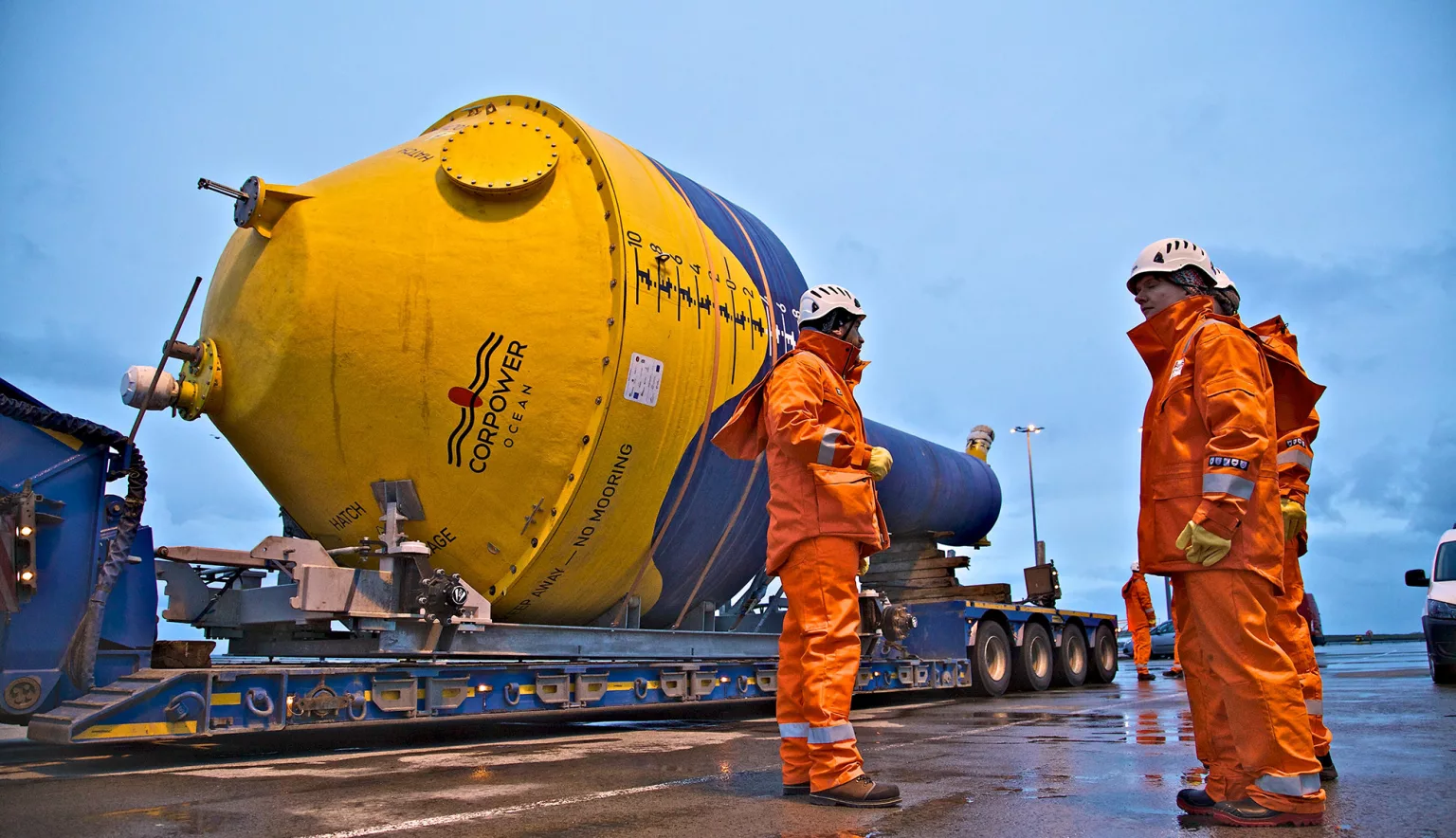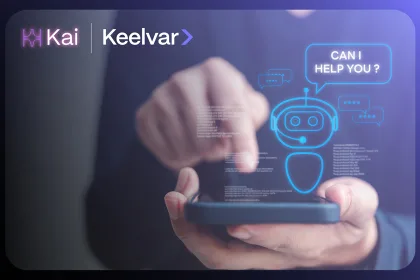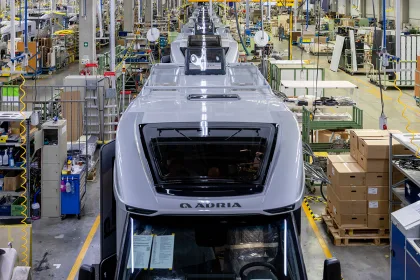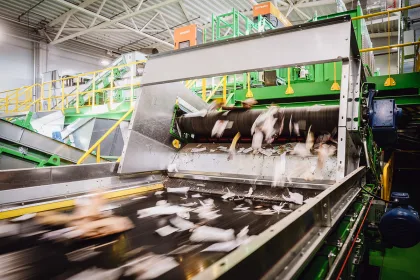How CorPower Ocean is developing game-changing wave energy convertors that will enable the efficient harvesting of electricity from our oceans.
SEA CHANGE
Clean energy is more important than ever. Not only does it help conserve non-renewable energy sources, but also improves energy security and enhances economic development through job creation.
Many European governments have set ambitious renewable energy targets – Sweden aims to source 100 percent of its energy from renewables by 2040, with Portugal aiming for an 80 percent target by 2030 and a carbon neutral economy by 2050.
Two of the most popular sources of renewable energy are wind – harnessed by turbines – and solar, captured by photovoltaic panels. But there is one less known energy source with vast potential: waves.
“Wave energy represents one of the largest untapped sources of clean energy. It is a huge opportunity of around 500 GW (500 billion watts) – around 10 percent of global energy,” explains Patrik Möller, Co-Founder and CEO of CorPower Ocean.
He continues to outline its benefits.
“Wave energy has a consistent and highly predictable production profile. It offers local electricity generation along the coasts where most people live. With little or no visual impact, wave farms can be built close to the main consumption centres, reducing required transmission capacity.
“As waves are built up from weather systems during several days over large oceans, the energy content is concentrated and smoothened, delivering a consistent power profile to our coasts that can offset the intermittency of wind and solar. Tapping into one of the largest energy storage units of our world – the oceans – wave energy offers a solution to fill the gaps when it is not windy or sunny.”
While wind and solar energy play an integral role in decarbonising our electricity systems, their volatility can cause problems.
On days when there is no wind or sun energy prices spike because demand outweighs supply, and vice-versa when there has been excess wind or sun. As wave energy is more consistent it can be sold at fairer average prices. It also works well for clean hydrogen production – a key fuel solution for decarbonising industry and transport.
For Möller, the lowest cost zero-carbon energy system is a diversified mix of complimentary sources including wave, wind and solar.
“Producing electricity when it is needed (natural balancing) should always be more efficient than the alternative of having unbalanced generation mitigated by storage,” he explains. “Adding wave energy into the mix offers a reliable and lowest-cost alternative for stabilising low-carbon electricity systems in many parts of the world. For this reason, wave energy is a key technology for the transition to a 100 percent renewable world over the next decades.”
But so far, wave energy isn’t in widespread use. Technological developments lag behind wind and solar, with wave energy farms currently remaining prohibitively expense to install and maintain.
This is where CorPower comes in. It is a company which was set up with the intention of introducing a new class of high-efficiency wave energy converters (WECs) to the market, in order to harvest electricity from ocean waves in a robust and cost-effective manner.
GAME CHANGERS IN WAVE ENERGY
Möller co-founded CorPower in 2012 with inventor Stig Lundbäck.
“I have always been intrigued by the science and engineering aspects related to energy. As a student I was thinking and reading a lot about various ways one could provide an endless supply of clean energy to the world,” he says.
However, while finishing his master’s degree at the University of California, he came up with an idea to make semiconductor manufacturing more efficient and spent the next decade establishing an equipment startup.
But his passion for clean energy remained undiminished, and in 2012 he found the incubator EIT InnoEnergy. It was here he met the cardiologist and inventor Stig Lundbäck who, inspired by the pumping principles of the human heart, had come up with a solution he thought would be able to make wave energy more efficient.
“At first I was sceptical; many bright people have tried to make wave energy work in the past without success,” Möller explains.
“However, the deeper we went into the physics of this concept the more we got convinced there was a real chance to make wave energy work by solving the main challenges – surviving the toughest storms and producing large amounts of electricity from a relatively small and low-cost device.”
Fast forward to 2020 and CorPower Ocean is a global leader in ocean technology, with a 50-strong team, headquartered in Sweden and offices in Portugal, Scotland and Norway. To date it has secured €32 million in funding from investors such as InnoEnergy, the European Commission, Wave Energy Scotland, the Swedish Energy Agency and many more who are interested in its high energy WECs.
“The CorPower wave energy converter can produce five times more electricity per tonne than any other known wave technology, by combining storm survivability with strongly amplified power capture in regular sea conditions,” the CEO says.
CorPower WECs have dimensions of nine by 19 metres and weigh 60 tonnes – many wave devices may be thousands of metres in dimension and weigh several thousand tonnes, yet have the same capacity.
“Getting large amounts of electricity from a small device significantly reduces capital expenditure. The compact lightweight devices are also less costly to transport, install and service, bringing down operational expenditure,” Möller comments.
These improvements are game-changing in the wave energy field, dramatically reducing costs of installing and operating wave energy systems.
Since inception in 2012, CorPower has used a step-by-step process to test and verify its technology. It is aiming to introduce its certified WEC products onto the market by 2024 and to facilitate this is following a five-stage commercialisation and product verification strategy: concept validation; critical systems testing; dry and ocean testing; dry and ocean demo and pilot array. In 2018 it achieved stage three, successfully testing the first complete WEC system off the coast of Scotland. The system showed it had verified storm survival properties and its power performance met expected levels in all conditions.
Alongside its product verification programme, CorPower is building a pipeline of projects developed by customers to ensure a clear and well-structured commercial roll-out.
“We are working with major players who are involved in the programme to verify the performance and economics of the technology as a basis for their commercial project development activities,” Möller says.
One such player is Simply Blue Energy, which is developing a combined floating wind and wave project in Ireland using CorPower’s WEC technology.
“We have worked with the team at CorPower over the last three years and they have, during this time, convinced us that they have the ability to bring their technology to the required levels of technical readiness within the timeframes we have agreed. We are excited to explore the possibility of combining wind and wave energy to bring balance to the grid,” comments Sam Roch-Perks, the CEO of Simply Blue Energy.
CorPower also recently launched its flagship demonstration project, HiWave-5 – which also doubles up as an R&D, manufacturing and service centre for WECs – in Viana do Castelo, Portugal. There were several reasons for choosing this location, one being Portugal’s environmentally-conscious attitude toward energy. CorPower’s work complements the Portuguese Industrial Strategy for Ocean Renewable Energies, designed to create a competitive and innovative industrial export cluster for ocean renewable energy.
“Wave energy can play a fundamental role in Portugal’s transition to 100 percent renewable energy, while providing a platform to drive Portuguese exports and long-term investment opportunities for local supply chains,” Möller says.
A reason for choosing Viana do Castelo specifically is that it offers a strong competence pool of engineers in various relevant sectors – offshore wind, manufacturing and shipyards – and boasts an infrastructure of industry, ports and top-level universities that will enable the project to be easily upscaled.
For the CEO, these relationships with partners and suppliers are crucial to the business.
“Close collaboration with our supply chain partners is key for bringing a bankable wave energy product to market. We benefit immensely from their competence, and strive to involve the suppliers already from the early stages of specifying and design of our system to the manufacturing and service and support stage when machines are deployed,” he explains.
GREEN FUTURES
CorPower is currently in stage four of its five-part plan – demonstrating the first C4 300 kilowatt WEC.
Möller outlines ambitious plans for the next year, including successfully finishing the dry-testing of the C4 drive train in the new on-land test rig in Västberga, and successfully deploying the first full scale C4 machine at its Agucadoura site in northern Portugal.
CorPower also wants to demonstrate its mobile factory production of full-scale composite buoys and to continue to secure customers who will develop commercial projects using its ground-breaking technology. Between 2022 and 2024 it will demonstrate three of its C5 devices – the last step before the planned commercial rollout in 2024.
As was the case with many industries, some of these ambitious plans were interrupted by the pandemic.
“We have been impacted by the financial markets becoming more risk averse in the initial phase of the COVID-19 pandemic, and our supply chain was interrupted when several regions in Europe shut down forcing us to change some suppliers to keep of project on plan,” the CEO says.
However, the company has been experiencing strong signs of recovery, as evidenced by renewed interest from both customers and investors.
The term “new normal” is being used with increasing frequency – although it signifies social distancing is still in force, perhaps it can also be used to describe a more resilient and socially-conscious economy. An economy in which wave energy, and CorPower Ocean, have a very large part to play.



































